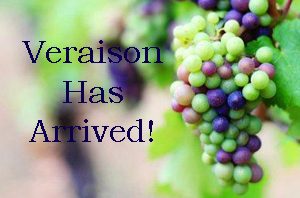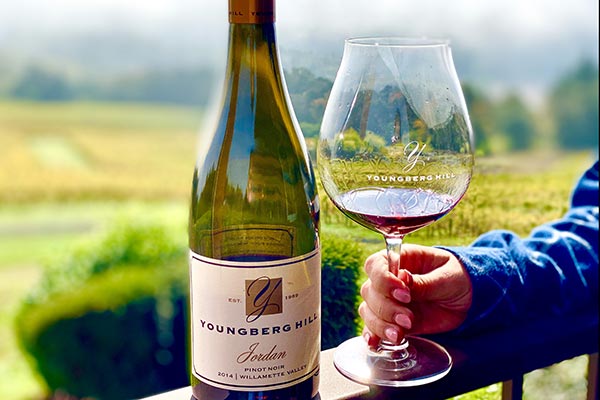 Grapes turning color in the Willamette Valley means that veraison is upon us. Veraison is an exciting time for grape growers because it signals the beginning of the ripening stage. Pinot Noir grapes turn from green to a dark black-blue color. Pinot Gris grapes turn autumn colors like orange, red, and yellow. Pinot Blanc grapes turn a very light frosty green. This process typically takes about two weeks to complete and then serious ripening begins.
Grapes turning color in the Willamette Valley means that veraison is upon us. Veraison is an exciting time for grape growers because it signals the beginning of the ripening stage. Pinot Noir grapes turn from green to a dark black-blue color. Pinot Gris grapes turn autumn colors like orange, red, and yellow. Pinot Blanc grapes turn a very light frosty green. This process typically takes about two weeks to complete and then serious ripening begins.
Although it is the easiest to recognize, skin color is not the only change to occur. The pulp of the berries change from a gelatin to a more liquid consistency. With this change, the pulp also adheres less to the seeds. The flavors of the fruit begin, meaning that instead of just tasting like grapes, you can taste all the other flavors that will later be enjoyed in the wine. The seeds themselves will turn from green to brown, lending to more mature seed tannins. The tannins that will show up in the wine later also develop in the skins, softening as the grape matures. And yes, the fruit becomes sweeter, shifting away from the unripen tartness.
From the time of veraison forward, we hope for continued long, cool, dry, sunny weather through harvest. This will slow the ripening and allow all of the above transitions to evolve in concert. The more balanced all these characteristics are in the fruit at harvest, the more balanced and of higher quality the finished wine will be. Hot weather during ripening pushes the fruit to ripen faster bring out more robust, fruit forward characteristics that typically throw the wine out of balance. Too cool of weather may also lead to an unbalanced wine via unripe fruit.
It’s this important stage of the grapes growing cycle that makes Pinot Noir in the Willamette Valley so special. We are blessed with the weather needed to provide wonderfully balanced fruit to produce the highest quality Pinot Noir.










